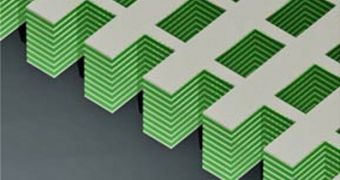Not two years ago, researchers managed to create the first 2D “invisibility cloak,” a material that was capable of concealing an object viewed from a fixed location by an observer. This was accomplished by manipulating the light hitting that object in such a manner that the photons were routed around it, therefore rendering it invisible. Now, the same thing has been achieved by another research team, but this time in three dimensions. This opens up new and exciting avenues of research that could materialize in applications which were considered a thing of science-fiction not many years ago.
At this point, the 3D invisibility cloak does not work in the wavelength range in which the human eye functions, as in visible light. But scientists managed to get closer to this range, which is situated between 400 and 750 nanometers. Details of their amazing accomplishment are published in the latest issue of the esteemed journal Science, the BBC News reports. The group that produced the device built up on previous research, which saw that development of cloaks that only concealed an object when viewed from a particular angle. But with this innovation, the goal of creating cloaks that can be used in real-life applications is brought closer than ever.
The new device was produced by German scientists based at the Karlsruhe Institute of Technology, who were led by expert Tolga Ergin. The expert told the British news agency that the science group planned to prove that space could indeed be transformed by using nothing more than a simple object, made out of a photonic metamaterial. This class of materials has the ability to considerably influence the behavior of light rays striking it. What it basically does is redirect the light beams on routes that take them above, below and around the object that needs to be concealed.
“You can think of any transformation that you would like to have, and tailor your material to mimic this,” Ergin says. “It's like a carpet mirror. If you hide an object under it, there is a bump, so you see a distortion in the reflected image. We put the carpet cloak on top of that bump and it bends the light so that the distortions disappear. You have the impression that the mirror you're looking at is flat.” The secret to obtaining this effect, the expert adds, is to change the direction and speed at which the light travels through the particular material you are using.

 14 DAY TRIAL //
14 DAY TRIAL //